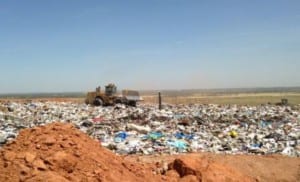The Resource Conservation and Recovery Act (RCRA) created detailed regulations to define the materials identified as solid wastes and hazardous wastes. While RCRA is a Federal program, state regulatory requirements for hazardous waste generators may be more stringent than those in the Federal program.
Solid Waste
RCRA states that “solid waste” means any garbage or refuse, sludge or other discarded material, resulting from industrial, commercial, mining, and agricultural operations, and from community activities. The definition of solid waste is not limited to wastes that are physically solid. Many solid wastes are liquid, semi-solid, or contained gaseous material.
Hazardous Waste
RCRA regulations establish basic hazardous waste management standards for companies who generate hazardous waste (hazardous waste generators). These standards are found in title 40 of the Code of Federal Regulations (CFR) in part 262 and at 40 CFR §261.5. The generator regulations ensure that hazardous waste is appropriately identified and handled safely to protect human health and the environment. Generators of hazardous waste are regulated based on the amount of hazardous waste they generate in a calendar month, not the size of their business or facility.
The Environmental Protection Agency (EPA) developed a regulatory definition and process that identifies specific substances known to be hazardous. This identification process can be very complex.
A four-step process is used to determine if a material will be classified as a hazardous waste:
- Confirm the material is identified as a solid waste.
- Determine if the waste is specifically excluded from regulation as a solid or hazardous waste.
- Determine if the waste is a listed or characteristically-hazardous waste.
- Determine if the facility petitioned EPA to de-list their wastes from RCRA Subtitle C regulation.
Hazardous waste generators can be characterized as:
- Conditionally-Exempt Small Quantity Generators (CESQGs)
- Small Quantity Generators (SQGs)
- Large Quantity Generators (LQGs)
There are specific regulations depending upon the generator classification and the classification of the hazardous waste material.
EPA enforces requirements under the Resource Conservation and Recovery Act regarding the safe handling, treatment, storage and disposal of hazardous wastes. EPA and the states verify RCRA compliance with these requirements through a comprehensive compliance monitoring program which includes inspecting facilities, reviewing records, and taking enforcement action where necessary.
The table below provides a summary of requirements for each class of hazardous waste generator. This is not an exhaustive list of all of the requirements for generators and should be used as just a guide. Generators are responsible for all applicable requirements in 40 CFR part 262 for small quantity generators and large quantity generators and 40 CFR §261.5 for conditionally-exempt small quantity generators. Additionally, hazardous waste generators should check with their state regulatory agency, as certain states have additional or more stringent requirements than the Federal government.


